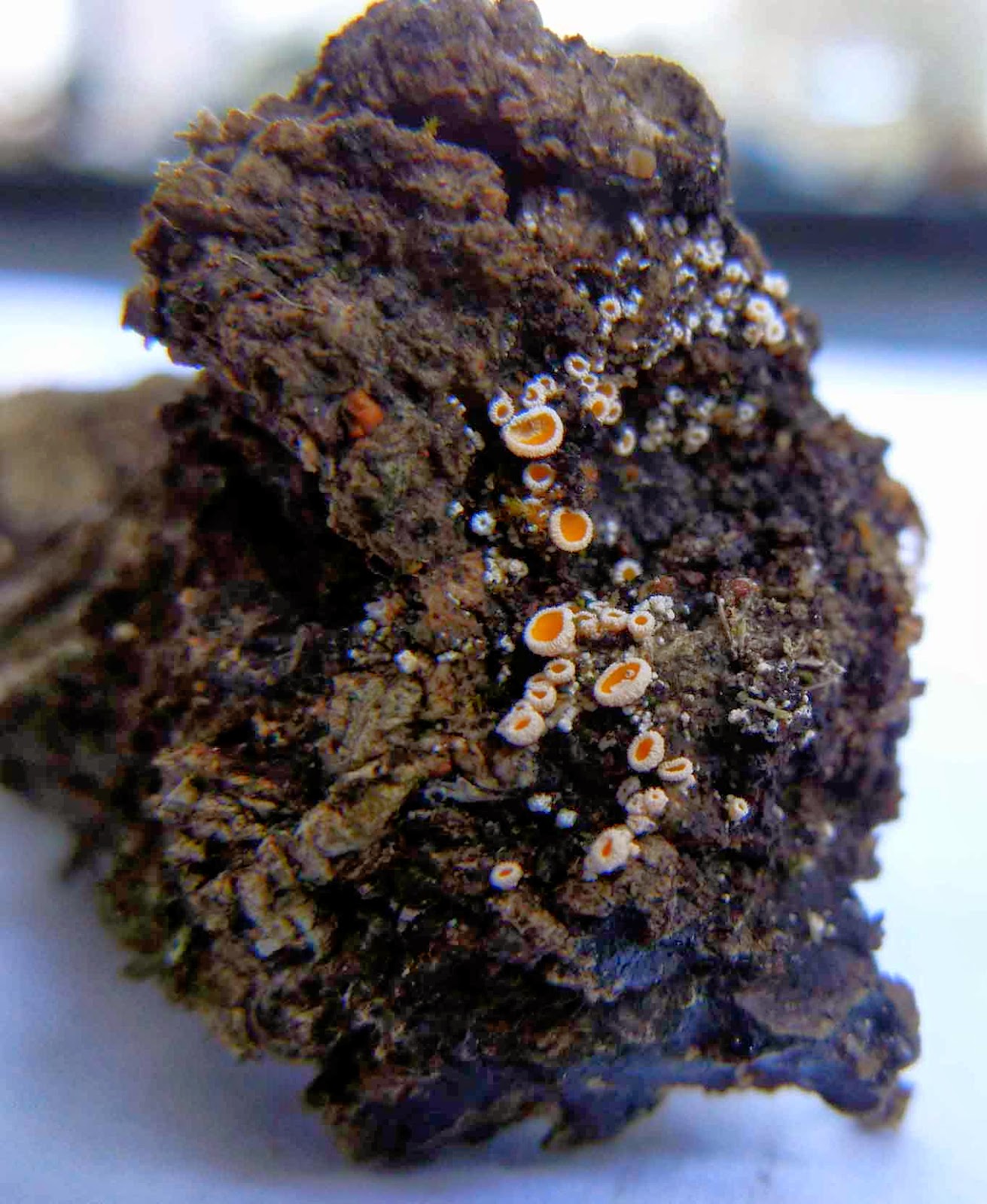 |
| Lachnellula resinaria var. resinaria |
 |
| The second time I found Lachnellula resinaria var. resinaria it was growing on balsam fir resin. |
Though I'd anticipated having to struggle through at least a hundred years of bark with my blade, the white dots were actually attached to a chunk of crumby resin, which easily dropped into my hand. I blew on the white dots with my warm breath. They didn't melt, so I wrapped them up and put them in my bag.
At home I inspected them with the loupe—as I expected, just fuzzy specks of mould. But wait a minute—why did two of those specks seem to have slits in the middle? And could that be a dot of egg-yolk yellow in the middle of another? I should probably mention that the biggest of these "specks" was less than a millimetre in diameter.
 |
| Even rejuvenated, the largest was barely a millimetre in diameter. |
 |
| These Lachnellula quickly revived in warm water and then produced spores. |
I offered these tiny ascomycetes a slide to drop spores on overnight and they kindly obliged, which made the task of identifying them to species easier than it might have been otherwise. Their spores were very small (2.75-4.25 x 1.5-2.4 µm) and ellipsoid-fusoid, which made them Lachnellula resinaria var. resinaria. The only other species with such tiny ascospores, along with white hairs, is the closely related Lachnellula resinaria var. calycina, but its spores are more globose.
 |
| Lachnellula resinaria var. resinaria ascospores |
Though Lachnellula resinaria var. resinaria, like most Lachnellula species, is usually saprobic, it might occasionally also be mildly pathogenic. Only Lachnellula willkommii is problematic as a pathogen. Introduced to North America in 1904, it causes "European larch canker," which can spread easily from branch to branch, particularly where conditions are moist.
Like L. willkommii, Lachnellula resinaria var. resinaria can also be found on Larix, as well as on Abies (see photo above) and Pinus, but it's preferred host is Picea, where I first found it. Though it can sometimes grow on dead twigs or bark, it appears most frequently on blackened, resinous canker wounds.
There's not a lot of information about Lachnellula resinaria var. resinaria in North American on the internet. I'm not sure if this is because it's rare, or just rarely collected. Because of its diminutive size, I suspect it's the latter reason.
References:
H.O. Baral's Worldwide Key to Lachnellula (pdf)USDA Lachnellula willkommii Fact Sheet
See also my post on Lachnellula subtilissima
No comments:
Post a Comment